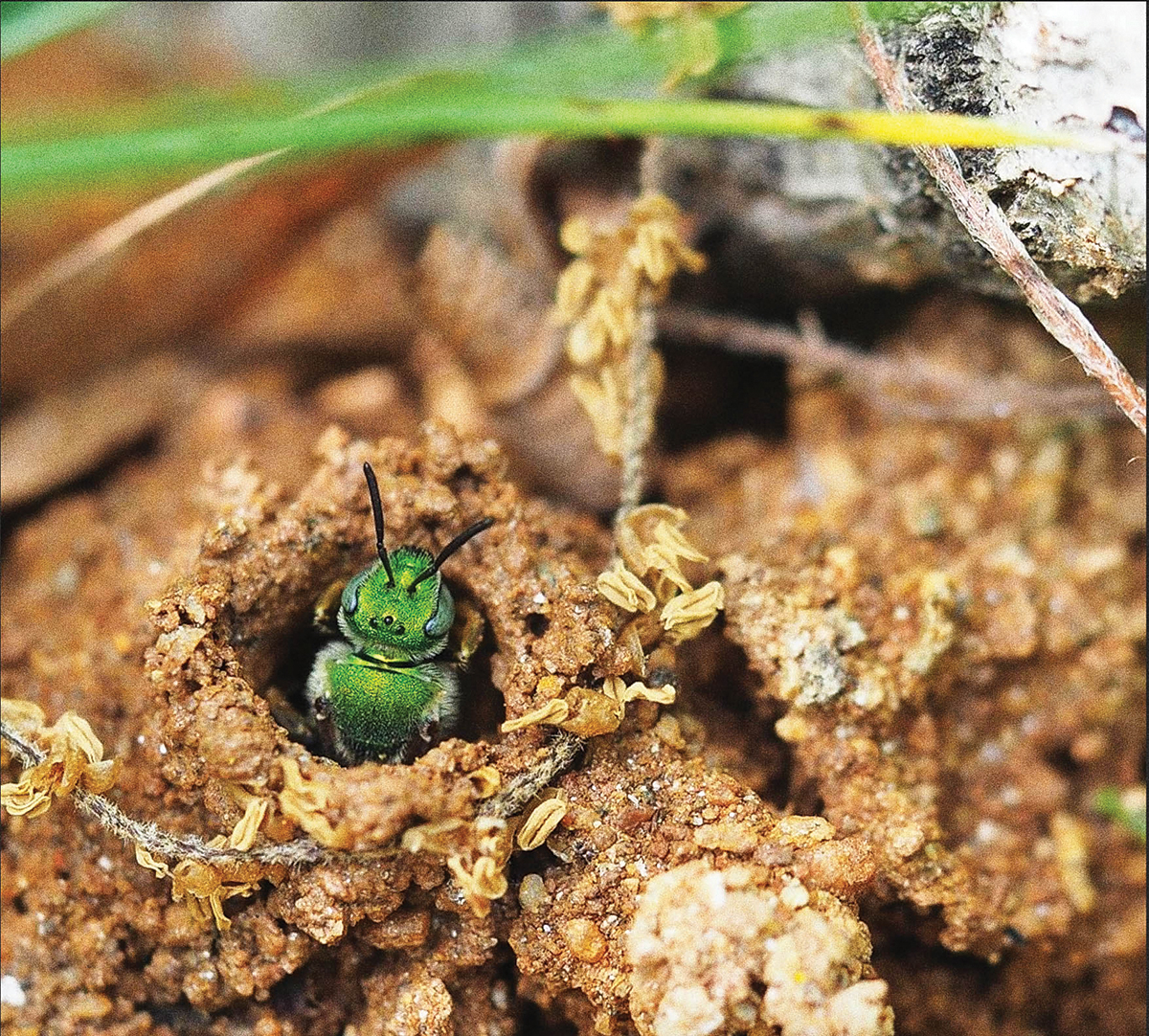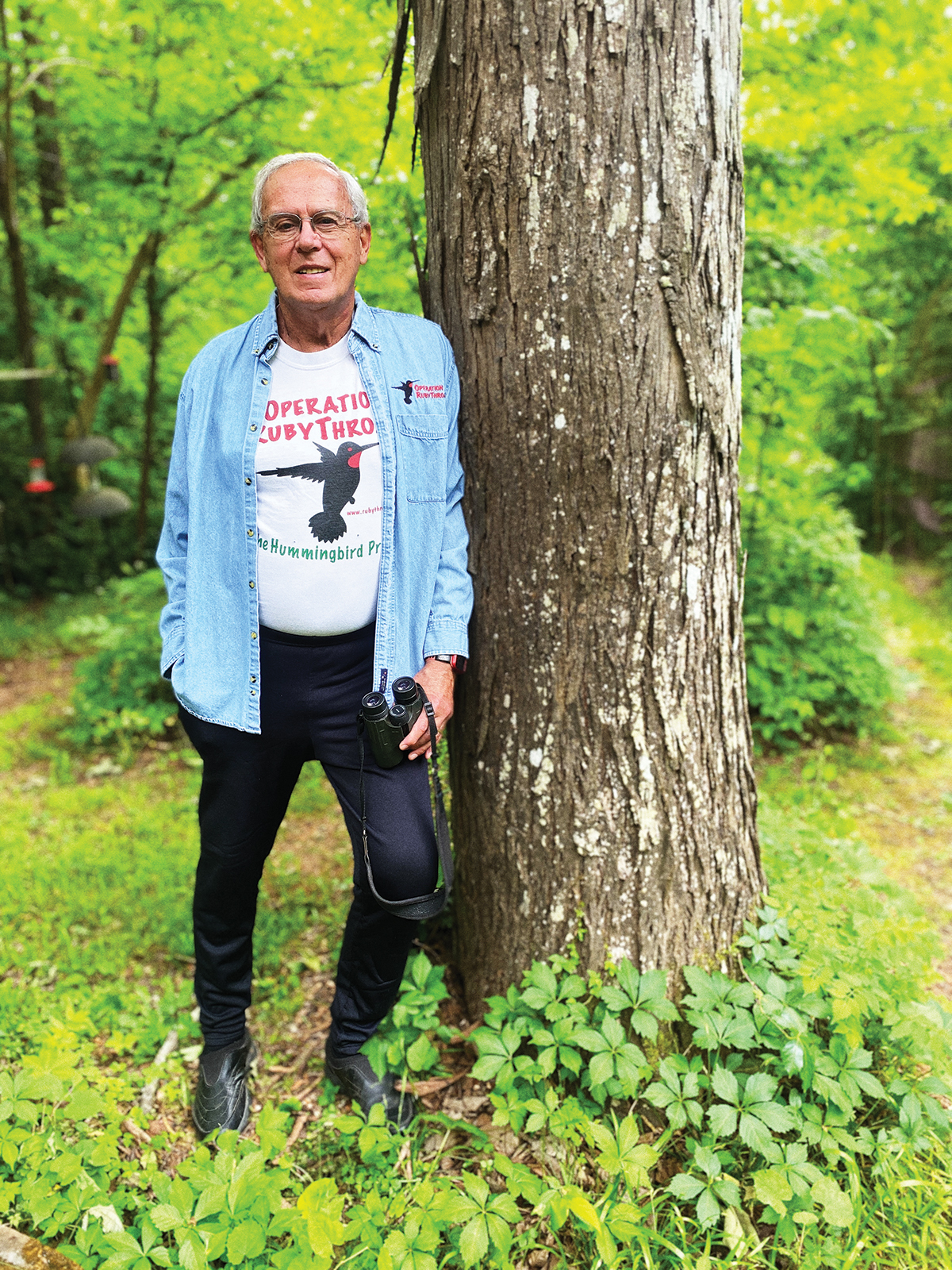Second annual contest encourages backyard nature encounters

During the thick of the pandemic, a bobcat pays a visit (photo by Lauren Shepherd)
The Eastern box turtle (Terrapene c. carolina) is an expert at quarantining. A solitary creature, this land-dwelling reptile is content to live out its 35-year lifespan completely alone in an area the size of a football field, no stay-at-home orders required.
That being said, it seemed only natural for Henderson County resident Angela Prodrick to connect with a female box turtle last spring during the early months of the pandemic.
“When I found this little lady in my neighborhood, it was after a wet spell and mushrooms were springing up. She had stopped off for a snack and was not a bit intimidated by me,” says Prodrick. “Once I laid down on the ground with my phone, she resumed eating and let me take a photo of her. It was a beautiful moment of a box turtle doing what they do best: foraging.”
The photograph was one of 275 entries submitted to Conserving Carolina’s inaugural Habitat at Home photo contest last spring. The contest invited residents of Western North Carolina and Upstate South Carolina to submit photos or videos of critters in their backyards.
Conserving Carolina is accepting photographs for the second annual Habitat at Home contest through May 15. A panel of outside judges, including gardening experts and professional photographers, will choose five finalists. The winner will be selected by online voting.

More signs of spring: Bear cubs photographed by Scott Nelson
The outreach effort aims to increase awareness of the nonprofit’s Habitat at Home campaign, an ongoing effort to get more people involved in hands-on restoration. Conserving Carolina staff hope that community members will be inspired to grow native plants, remove invasive species like kudzu, or build nesting boxes on their own properties.
“Our homes and neighborhoods make up a large share of the overall landscape, so they need to be part of the conservation solution,” says Rose Jenkins Lane with Conserving Carolina. “Having more habitat at our homes isn’t just good for wildlife; it’s wonderful for people. We all have this deep need to be connected to nature, and for many of us that need isn’t being met.”
Last year’s entries showcased a smattering of critters like bluebirds, owls, toads, and butterflies. Lauren Shepherd even snapped a photo of a bobcat in her Leicester backyard. An avid birdwatcher, Shepherd was listening to the calm, flute-like song of a wood thrush when the bird let out an alarm call.
“All of a sudden, this bobcat appeared and pounced. I’m not sure if he or she got what it was after,” says Shepherd, who hasn’t seen the elusive cat since.
Scott Nelson, an Asheville resident living off Patton Mountain Road, submitted photographs of an increasingly more common sight: black bear cubs. The closeups are stunning. However, bear behavior in Nelson’s neighborhood — digging through trash, breaking into cars, opening house doors — suggests habitat loss. Unfortunately, bears aren’t the only animals affected by urbanization.
“Eastern box turtles are a threatened species. If we continue on the path we are on, it won’t be long before the box turtle population declines even more,” says Prodrick. “It’s important for people to recognize that there are small steps they can take every day to help our environment.”
Entries for Conserving Carolina’s 2021 Habitat at Home photo contest will be accepted through May 15. To enter, post your photo or video on Facebook or Instagram with the hashtag #HabitatAtHome2021. Submissions can also be emailed to rose@conservingcarolina.org. For more information, visit conservingcarolina.org.



